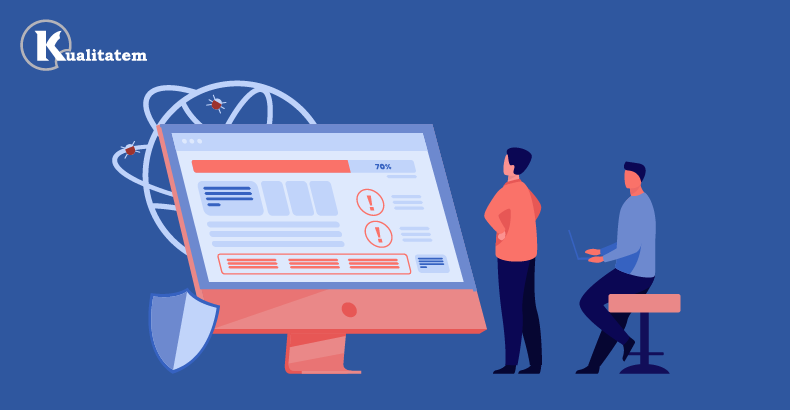Latency and Load Management in Streaming Platforms: Testing Strategies for Entertainment Apps

- July 31, 2025
- Zunnoor Zafar
Netflix has around 301.6 million active subscribers as of now.
That’s just the subscriber count of one of the many streaming platforms. Millions of people watch their favourite TV shows and movies online every day.
This highlights that these platforms are at the heart of consumer engagement. With the increase in demand for smooth, high-resolution content. One that can be watched on any device. The need for good latency and load management strategies has become increasingly important.
Entertainment apps aren’t just judged by the content they provide. But by the reliability, speed, and scalability of their delivery. This is where advanced QA testing plays a huge role in assuring a top user experience.
Why Latency and Load Matter in Streaming Services?
Before we answer this question, you should know what latency and load management are.
So, latency can be described as the delay before a transfer of data begins following an instruction. It’s a very important metric in streaming services. Even sub-second delays can result in visible lag and buffering. This experience becomes frustrating for users after a point, leading them to seek alternatives.
Coming to load management. It concerns the platform’s ability to handle expected and unexpected surges in user traffic. Take, for example, millions of people logging in during a live sports event, like the FIFA World Cup final. Or maybe a much-awaited series premiere.
For streaming platforms, poor performance is not just a setback. It has legitimate business risks. Including lost subscribers and negative reviews. Advertising revenue is also reduced massively because of this.
Therefore, the best platforms invest heavily in software testing services. Ones that are specifically targeted at minimizing latency and ensuring good load management.
Main Challenges for Streaming Platforms
The following are some of the key things that become a hurdle for streaming platforms. These are the elements that have to be focused on most during testing.
1. Device & Network Diversity
Everybody knows that people out there are using thousands of devices, specifically mobiles, out there. There’s a global audience operating on varied network conditions. So, the scope for potential latency and load management is huge.
Therefore, when testing a streaming platform, a range of environments has to be simulated. This is done to pre-emptively identify and address weak spots.
2. Scalability During Peak Loads
If there’s one place where scalability is needed, it’s streaming platforms. They have to do it smoothly as well to accommodate a steady growth of users or sudden traffic spikes.
Load testing and capacity planning are essential here. And not just as one-off exercises but as continuous processes. Especially when platforms roll out new features or expand their user base.
3. Real-Time Interactive Features
If you’ve ever used a streaming app like Twitch. You’ll know that they blur the lines between passive content consumption and interactivity. Live chats, polls, and watch parties are all happening there.
These features are extremely demanding on the backend infrastructure. This makes advanced quality assurance a must.
Advanced Testing Strategies for Streaming Platforms
A strategic testing approach has to be taken to ensure streaming platforms work efficiently.
1. Performance & Load Testing
Performance testing evaluates multiple aspects. These aspects include server responsiveness, throughput and stability under varying loads.
Effective load testing goes beyond identifying when platforms fail. It also seeks to understand how and why. With the goal of continuous mitigation. This is done by running:
- Scenario-based Tests: Real-world load patterns are simulated. For example, flash crowds during prime time. This enables testers to mirror actual user behaviour.
- End-to-End Stress Tests: The streaming platform is pushed way beyond the expected peak loads. Then, breaking points are determined and countermeasures are made.
2. Network Virtualization & Throttling
It’s obvious that not every user will have access to high-speed internet. Hence, good QA testing service providers should employ network virtualization tools.
These tools help them mimic different bandwidths. Latencies and packet loss scenarios are all taken into consideration. In turn, this leads testers to ensure that the application degrades gracefully when there’s slow internet. Their goal should be to provide the best possible experience to all users. Always.
3. Device Fragmentation Testing
Entertainment apps have to optimize playback and responsiveness across an insane number of devices. Smart TVs, set-top boxes, game consoles, mobile phones, laptops, and tablets are some of them.
QA specialists are required to test on all of these. They can use various emulators and devices to rigorously test for smooth streaming and UI adaptivity. As well as resource efficiency.
4. API and Microservices Resilience
Every streaming platform relies heavily on microservices. Considering this, QA should focus on the APIs that drive content search. Along with user authentication, recommendations, and more.
Continuous integration pipelines must include automated tests. Ones that look for issues in API latency, error handling, and failover mechanisms. If this is done correctly, a streaming application will always be on the safe side. Outages will be minimized.
5. Real-time Monitoring & Feedback Loops
Simulating every real-world scenario is one of the hardest things to do. Even with hours of pre-launch testing, this goal might not be achieved.
For this reason, real-time monitoring tools have to be integrated post-release. Doing so will enable you to detect defects, performance drops, and bottlenecks as they occur.
You’ll have real-time insights on hand. Which can be used in the quality assurance cycles to enable ongoing improvement.
Streaming Platforms and Entertainment Apps Testing with Kualitatem
At Kualitatem, we recognize that delivering high-quality streaming experiences is both an art and a science.

Our specialized QA testing services for entertainment apps include industry-leading practices. We research everything before we start. So, whether you’re building a new streaming platform or scaling an existing one, Kualitatem will help you:
- Minimize latency for fast playback.
- Ensure good performance under the heaviest loads.
- Optimize across devices and networks.
- Integrate continuous improvement and feedback in your app’s lifecycle.
Closing Thoughts
Effective latency and load management are important for streaming platforms. If done correctly, these things can improve user experience, and potential business risks can be avoided.
Some advanced QA testing strategies for entertainment apps include performing performance & load tests and device fragmentation tests. But that’s not all, network virtualization as well as real-time monitoring also have to be done. These things will optimize delivery and ensure reliability across various conditions.











